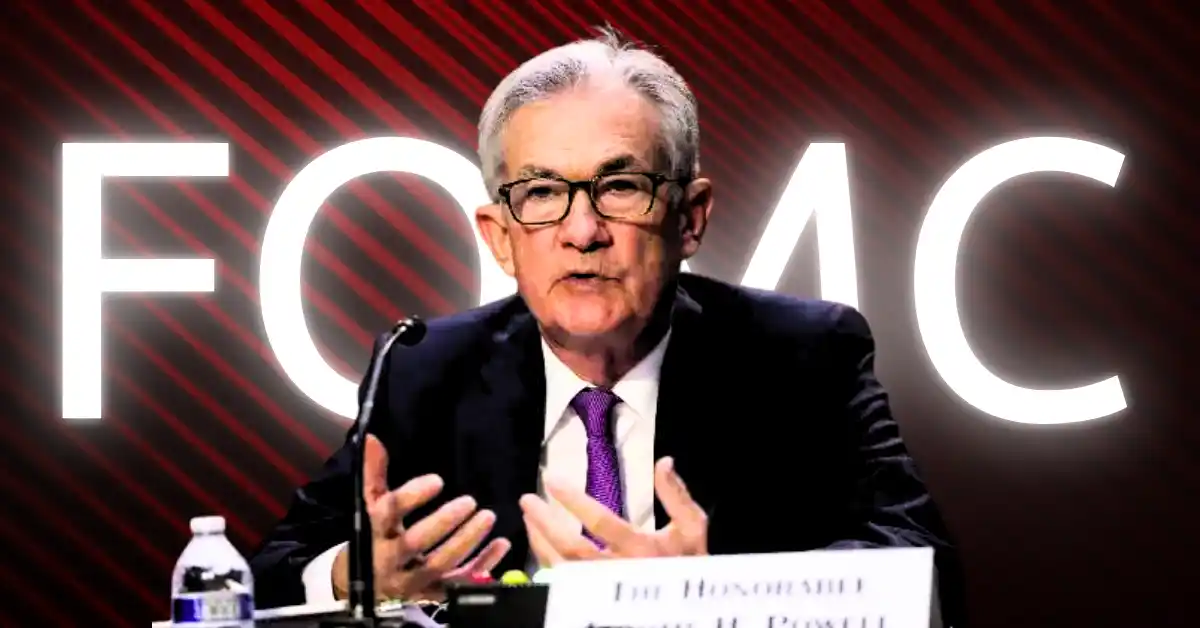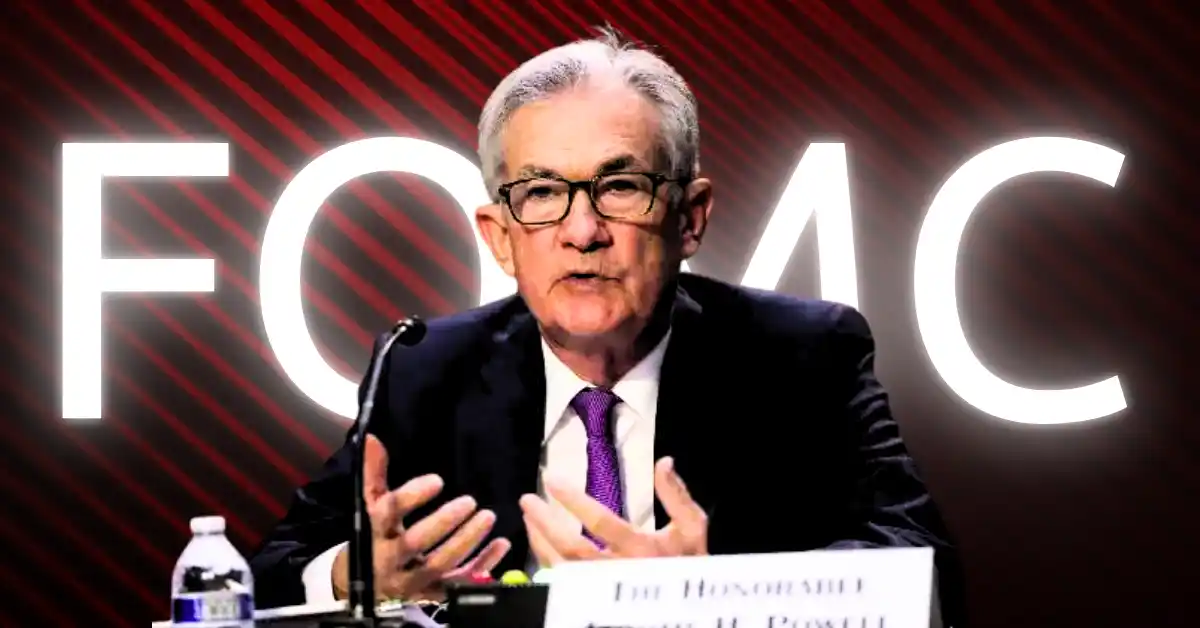The FOMC Meeting’s Potential Impact on Bitcoin and Ethereum
Introduction
The Federal Open Market Committee (FOMC) meetings are pivotal events that send shockwaves through global financial markets. For the cryptocurrency sector, particularly Bitcoin (BTC) and Ethereum (ETH), these meetings can be especially consequential. As the crypto market continues to mature, understanding how FOMC decisions influence these digital assets is crucial for investors, traders, and enthusiasts. This report delves into the intricate relationship between FOMC policies and the crypto market, exploring how interest rate decisions, economic outlooks, and Fed communications can shape the trajectory of Bitcoin and Ethereum.
Understanding the FOMC and Its Influence on Crypto
The FOMC, the Federal Reserve’s monetary policy-making body, plays a critical role in shaping the U.S. economy. Its primary tool is the federal funds rate, which influences borrowing costs across the economy. While the crypto market operates independently, it is not isolated from these macroeconomic forces. Here’s why the FOMC matters to Bitcoin and Ethereum:
Risk Appetite and Market Sentiment
Interest rate decisions directly impact investor risk appetite. Lower interest rates typically encourage investors to take on more risk, potentially driving capital into higher-risk, higher-reward assets like Bitcoin and Ethereum. Conversely, higher rates can dampen risk appetite, leading investors to seek safer havens such as government bonds or stablecoins.
Inflation Hedge Narrative
Bitcoin is often positioned as a hedge against inflation, a store of value that can protect against the erosion of purchasing power caused by rising prices. FOMC decisions aimed at controlling inflation can affect Bitcoin’s perceived value as an inflation hedge. If the Fed signals a commitment to combating inflation, Bitcoin’s appeal as a hedge may strengthen. However, if inflation remains persistent, the Fed’s inability to control it could undermine confidence in Bitcoin’s long-term value.
Dollar Strength and Crypto Valuation
Interest rate hikes tend to strengthen the U.S. dollar, potentially making dollar-denominated assets like Bitcoin and Ethereum less attractive to investors holding other currencies. A stronger dollar can lead to outflows from crypto markets as investors seek higher returns elsewhere. Conversely, a weaker dollar can boost crypto valuations as investors look for alternative stores of value.
Overall Market Sentiment
The FOMC’s pronouncements and the overall economic outlook they convey can significantly impact market sentiment. Investors will be looking for clues about the Fed’s stance on inflation, economic growth, and labor market conditions. A dovish tone, suggesting a willingness to cut rates in the future, could boost crypto prices. A hawkish tone, signaling a commitment to fighting inflation even at the expense of economic growth, could weigh on them.
Interest Rate Decisions: The Central Focus
The most immediate impact of an FOMC meeting often revolves around the decision on interest rates. While the expectation is that the Fed will likely hold rates steady, the real key lies in interpreting Fed Chair Jerome Powell’s commentary. His words will either reinforce existing market sentiment or shift the crypto direction rapidly.
Holding Steady
If the FOMC decides to hold rates steady, as many anticipate, the market’s reaction will depend on the accompanying statement and Powell’s press conference. A dovish tone, suggesting a willingness to cut rates in the future, could boost crypto prices. A hawkish tone, signaling a commitment to fighting inflation even at the expense of economic growth, could weigh on them.
Rate Hikes
Unexpected rate hikes could trigger a sell-off in the crypto market as investors reduce their exposure to riskier assets. However, the long-term impact would depend on the reasons behind the rate hike and the overall economic outlook. If the hike is seen as a necessary measure to control inflation, the market may react positively in the long term. If the hike is seen as a sign of economic weakness, the market may react negatively.
Rate Cuts
While less likely in the immediate term, any hint of future rate cuts could provide a significant boost to Bitcoin and Ethereum. Lower rates tend to increase liquidity and encourage investment in riskier assets. This could lead to increased capital inflows into the crypto market, driving up prices.
Beyond Interest Rates: Deciphering the Fed’s Message
The FOMC’s statement and Powell’s press conference are crucial for understanding the Fed’s outlook on the economy and its future policy intentions. Investors will be looking for clues about several key factors:
Inflation
How concerned is the Fed about inflation? Are they seeing signs of it cooling down or remaining persistent? The Fed’s stance on inflation will have a significant impact on Bitcoin’s perceived value as an inflation hedge. If the Fed signals a commitment to combating inflation, Bitcoin’s appeal as a hedge may strengthen. However, if inflation remains persistent, the Fed’s inability to control it could undermine confidence in Bitcoin’s long-term value.
Economic Growth
What is the Fed’s assessment of the current state of the economy? Are they anticipating a slowdown or continued growth? The Fed’s outlook on economic growth will influence investor risk appetite. If the Fed signals a commitment to supporting economic growth, investors may be more willing to take on risk, potentially driving capital into crypto markets. If the Fed signals a commitment to combating inflation even at the expense of economic growth, investors may be more cautious, potentially leading to outflows from crypto markets.
Labor Market
How tight is the labor market? Are wages rising at a sustainable pace? The Fed’s stance on the labor market will influence its policy decisions. If the labor market is tight and wages are rising rapidly, the Fed may be more inclined to raise interest rates to combat inflation. If the labor market is weak and wages are stagnant, the Fed may be more inclined to cut interest rates to support economic growth.
Quantitative Tightening
What are the Fed’s plans for reducing its balance sheet? This process, known as quantitative tightening, can also impact liquidity and asset prices. If the Fed signals a commitment to quantitative tightening, it could lead to outflows from crypto markets as investors seek higher returns elsewhere. If the Fed signals a commitment to maintaining liquidity, it could lead to inflows into crypto markets as investors seek higher returns.
Bitcoin’s Unique Position: ETF Inflows and Long-Term Holders
Despite short-term volatility and brief price dips, Bitcoin ETFs have maintained a strong net inflow streak, indicating sustained institutional interest. Additionally, on-chain data reveals a divergence between short-term holders, who may be selling, and long-term holders, who remain steadfast in their conviction. This suggests a belief in Bitcoin’s long-term value proposition.
Furthermore, some analysts believe that Bitcoin could reach ambitious targets by year-end, fueled by increasing adoption and limited supply. The halving event, which reduces the supply of new Bitcoin, is also expected to have a positive impact on prices. As the crypto market continues to mature, Bitcoin’s role as a store of value and a hedge against inflation is likely to become more pronounced.
Ethereum’s Evolving Landscape: The Merge and Beyond
Ethereum’s transition to a proof-of-stake consensus mechanism, known as the Merge, has significantly altered its economic dynamics. The reduction in ETH issuance has made it a potentially deflationary asset, further strengthening its investment appeal. The ongoing development of layer-2 scaling solutions and the growth of decentralized finance (DeFi) applications continue to enhance Ethereum’s utility and drive demand for ETH.
The Merge has also made Ethereum more energy-efficient, addressing one of the primary criticisms of proof-of-work blockchains. This could lead to increased institutional interest in Ethereum, further driving up prices. Additionally, the growth of DeFi applications on the Ethereum network is likely to continue, further enhancing its utility and driving demand for ETH.
The Crypto Market’s Reaction: Volatility and Uncertainty
The crypto market is known for its volatility, and FOMC meetings often exacerbate this trend. Traders should be prepared for rapid price swings and potential periods of uncertainty leading up to and following the announcement. Technical analysis, risk management strategies, and a thorough understanding of market dynamics are essential for navigating these turbulent waters.
Conclusion: Navigating the FOMC Influence
The FOMC meeting’s impact on Bitcoin and Ethereum is complex and multifaceted. While interest rate decisions are a primary focus, the Fed’s overall message about the economy and its future policy intentions is equally important. By carefully analyzing the FOMC’s statement, listening to Powell’s press conference, and understanding the unique factors driving Bitcoin and Ethereum, investors can better navigate the potential impact of these events on their portfolios. In conclusion, even with the anticipated stability, the real impact lies in understanding the nuances of the Fed Chair’s message, which has the power to make immediate shifts in the crypto landscape.












